Affiliate disclosure: This post may contain affiliate links. Please see our Privacy Policy.
Known as the “toothache plant,” herbalists reach for spilanthes tincture for its pain-relieving and numbing properties. It’s traditionally been used to treat inflamed gums, mouth sores, and toothaches. Spilanthes antibacterial and antiviral properties are lesser known but no less potent. It’s a wonderful herb for helping fight infections, colds, and flu. Thankfully, making a tincture from this colorful plant is easy to do at home!
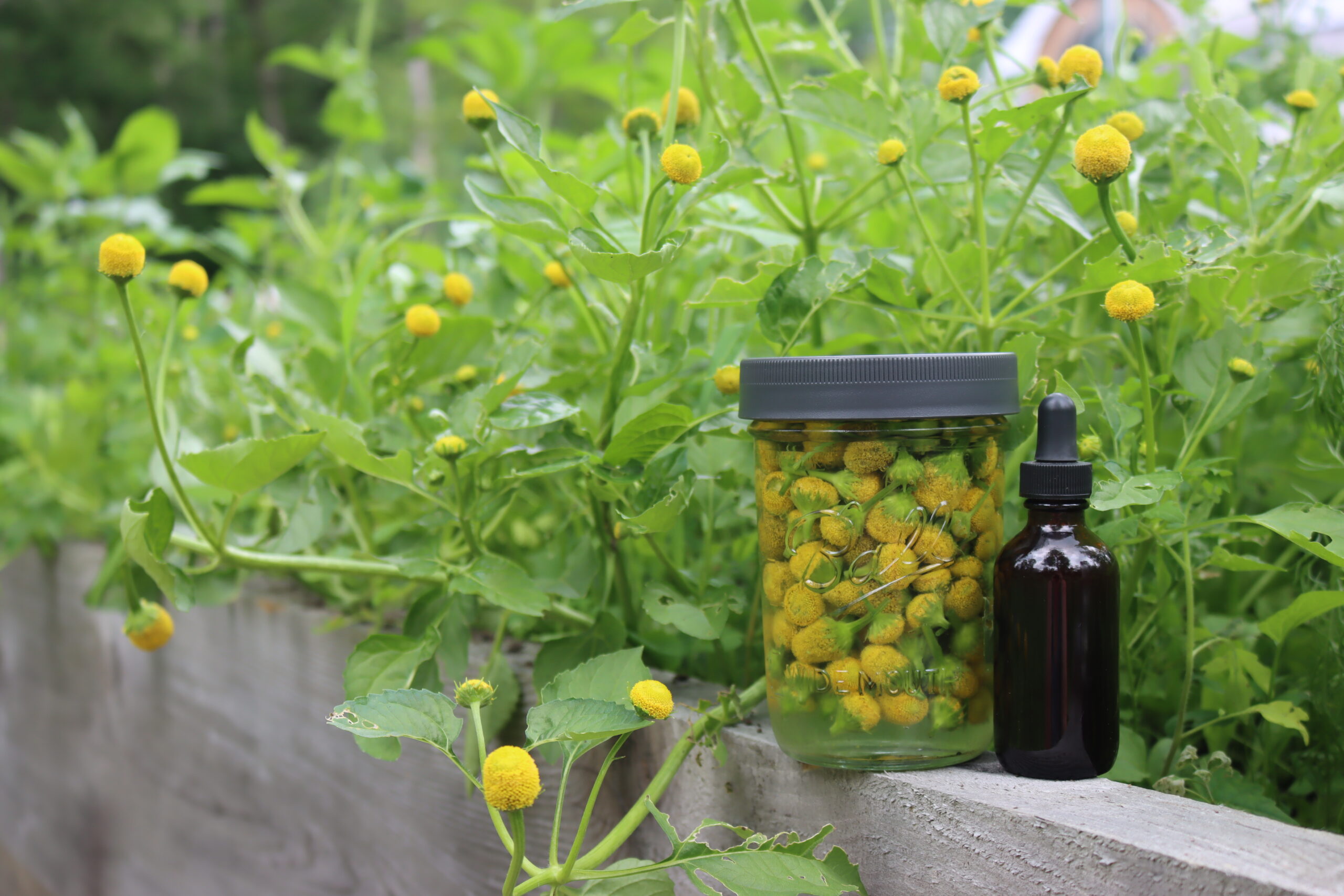
This underrated herb is one of my favorite herbs for quickly combating colds, flu, and infections at the first signs of illness. It’s an immune-boosting herb, and it also has topical antimicrobial properties.
When I’m starting to feel sick, it’s easy to add a little spilanthes tincture to a cup of tea or juice. Its antibacterial properties work quickly and help me recover. I’ve also used it as a mouthwash and throat spray.
Today, I usually only find spilanthes growing in the gardens of the most dedicated herbalists. This is so disappointing as spilanthes is easy to grow, and its uniquely beautiful little flowerheads bring little pops of color to the herb garden.
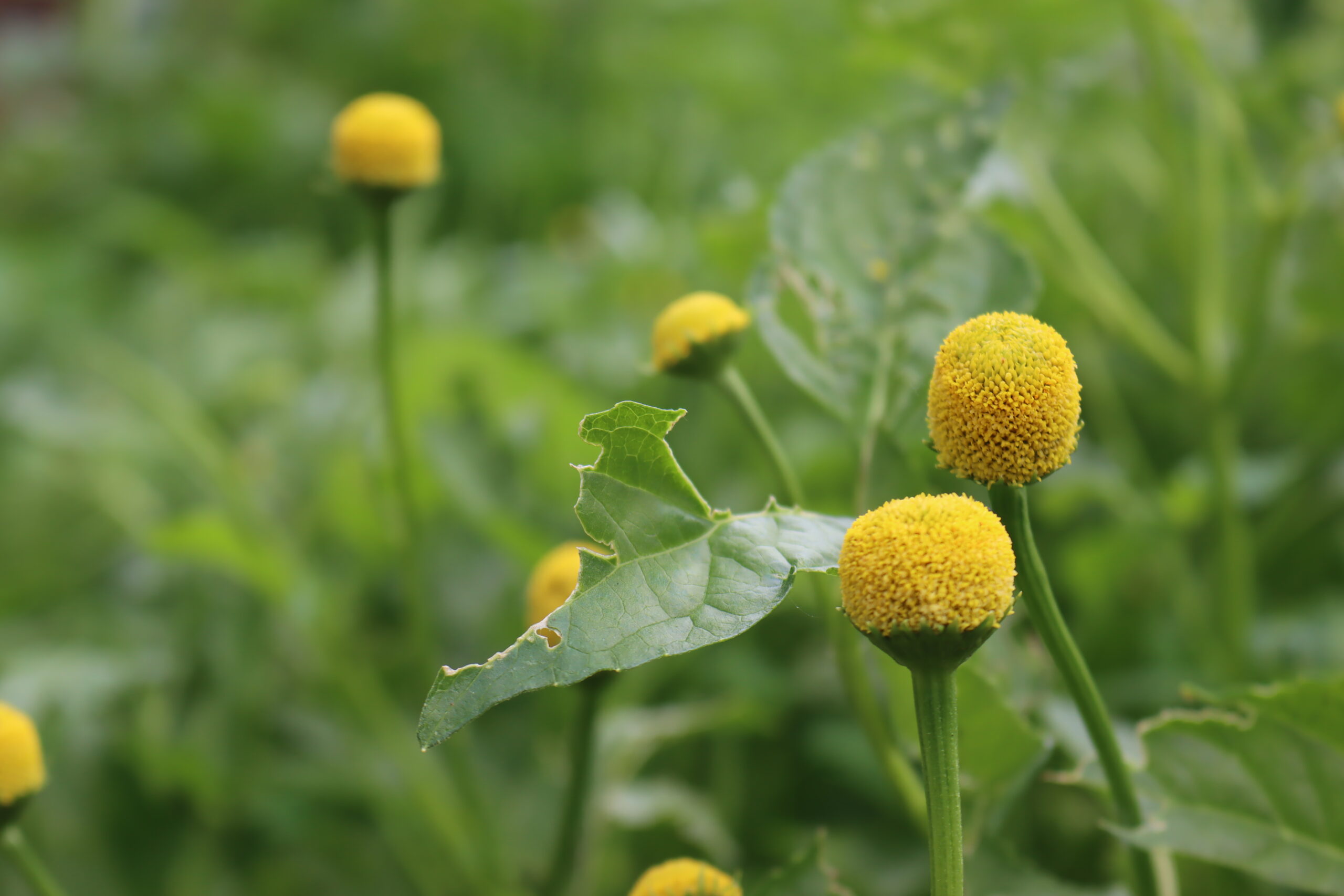
It’s easy to start spilanthes from seed; many reputable seed companies now have it available. You can direct sow spilanthes, but if you live in a northern climate, you may want to start your spilanthes in flats indoors about six weeks before your last frost.
While spilanthes is a tender annual, it often self-seeds, so as long as you let some bloom and go to seed, you may never need to plant this herb again!
If you don’t have space for a full herb garden, spilanthes is one of those easy-going plants that will thrive in planters, containers, and window boxes.
You can begin harvesting from your spilanthes plant when the plant reaches several inches in height. As we’ll discuss below, the flowerheads are the best for the tincture, but you can also use the leaves medicinally, or add it sparingly to soups, salads, sauces, and cocktails. Just be warned: spilanthes can cause a tingling sensation in the mouth and excessive saliva production.
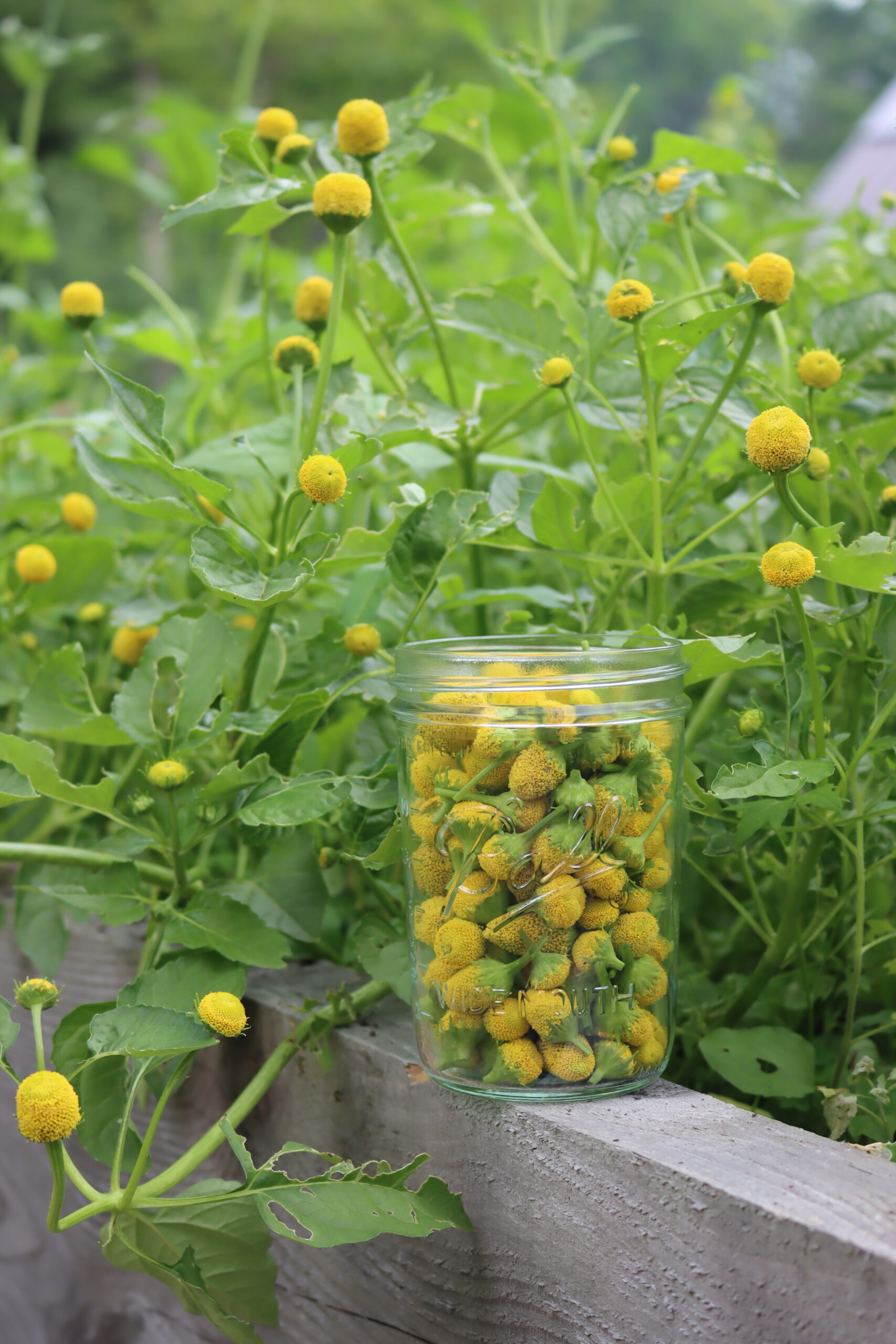
(Always consult your doctor or a clinical herbalist before trying any new herbal remedy, as there’s always the possibility of unintended consequences, allergic reaction, or interactions with other medication. If you’re harvesting wild plant material, make sure you’re 100% confident in your identification and consult multiple sources for your ID. The following is based on my research and experience, but I don’t claim to have any certifications that would qualify me to advise you on your health. Please do your own research and always verify with multiple reputable sources.)
Spilanthes Tincture Uses
Herbalists use spilanthes tincture both topically and internally to treat various ailments.
Topically, spilanthes tincture is used for:
- Treating Dermatitis
- Reducing Inflammation
Internally, spilanthes tincture is used to:
- Treat Toothaches and Inflamed Gums
- Fight Colds, Flu, and Infections
- Treat Certain Bacterial and Fungal Infections
- Treat Dry Mouth
- Soothe Sore Throat
Additionally, the herb is currently being investigated for its potential:
- Antimalarial Properties
In these cases, research is ongoing, and more work is needed to establish whether or not the benefits are scientifically significant.

Benefits of Spilanthes Tincture
Spilanthes is widely used in folk medicine worldwide, and modern studies have largely supported its use. Several studies have shown that spilanthes has significant antioxidant and anti-inflammatory activities, making it a viable choice for further research into treating life-threatening diseases.
One of its best-known uses is treating toothaches. Many researchers believe this is partially because of spilanthe’s analgesic or pain-relieving properties. A 2012 study on rats with induced pain found that rats who received oral doses of spilanthes extract showed a significant reduction in writhing or pain symptoms.
Spilanthes may also help with certain mouth conditions by increasing saliva production. Adequate saliva production is essential to a healthy mouth because it provides a covering for the teeth and gums, protecting against tooth decay, gum disease, and oral infections. A 2017 study found that toothpicks containing spilanthes helped patients with opioid-induced dry mouth.
Other studies have indicated that spilanthes can help treat mouth conditions related to inflammation, particularly stomatitis or sores inside the mouth. A 2008 study found that spilanthes decreases the amount of enzymes that cause inflammation.
Spilanthe’s may help treat other types of inflammation, too. A 2019 study found that spilanthes reduces inflammation from dermatitis and pancreatitis by reducing nitric oxide production. In a healthy human, nitric oxide stimulates hormone release and dilates blood vessels. However, when levels become too high due to inflammatory responses, it can harm circulation and the surrounding tissue.
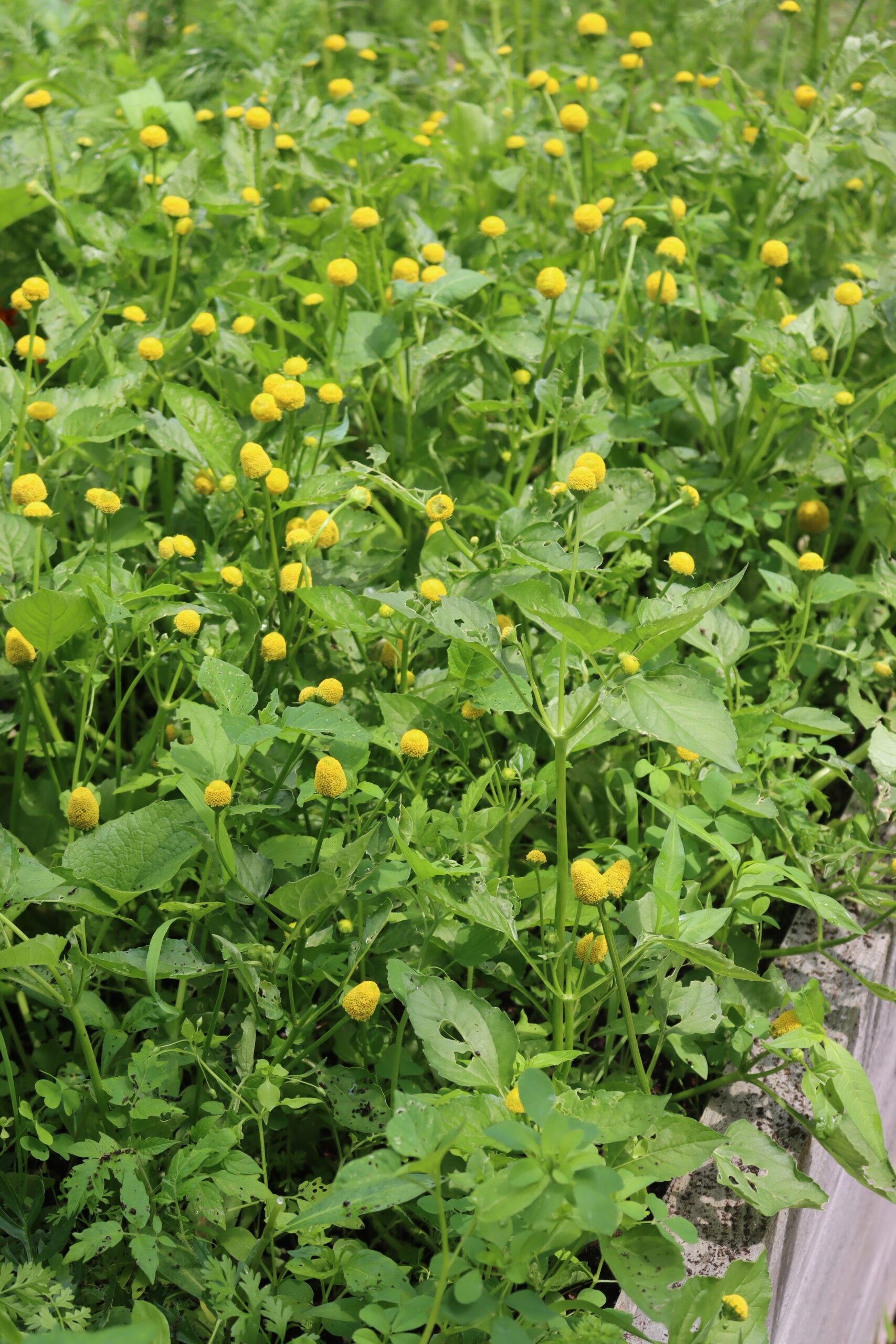
One of the lesser-known properties of spilanthes is its ability to inhibit bacterial and fungal infections. Spilanthes has shown promising results against Gram-positive bacteria Bacillus cereus, B. pumilus, B. subtilis, B. cereus, Staphylococcus aureus, Enterobacter faecalis, Pseudomonas aeruginosa, and Corynebacterium diphtheriae, Gram-negative bacteria E. coli, and the fungus Candida albicans.
Research has also indicated that spilanthes has antiviral activity. Studies have found that spilanthes has moderate activity against several common viruses, including HSV, herpes, Cox, Coxsackie B2 virus. However, the more promising results were against measles, measles edmonston A, polio, poliomyelitis virus type 1 strain 1A/S3,SF, Semliki Forest virus A7 and VSV, and vesicular stomatitis virus.
Lastly, spilanthes is a common herb used to treat malaria in parts of Africa and India. Though relatively little research has been completed on this use of the herb, one study did find that spilanthes is active against Plasmodium falciparum, the protazoan parasite that causes malaria.
Don’t use spilanthes if you’re pregnant, consuming alcohol, taking diuretics, have prostate cancer, or have an allergy to plants in the daisy or Asteraceae family.
Spilanthes tincture dosages vary based on their intended use. Generally, it’s recommended for short-term usage, especially internally, as its antibacterial effects can kill off good bacteria, too, much like antibiotics. Generally, herbalists recommend taking ½ to 1 dropper full up to twice a day for three days for adults. You can also use the mouthwash or throat spray as needed for up to three days.
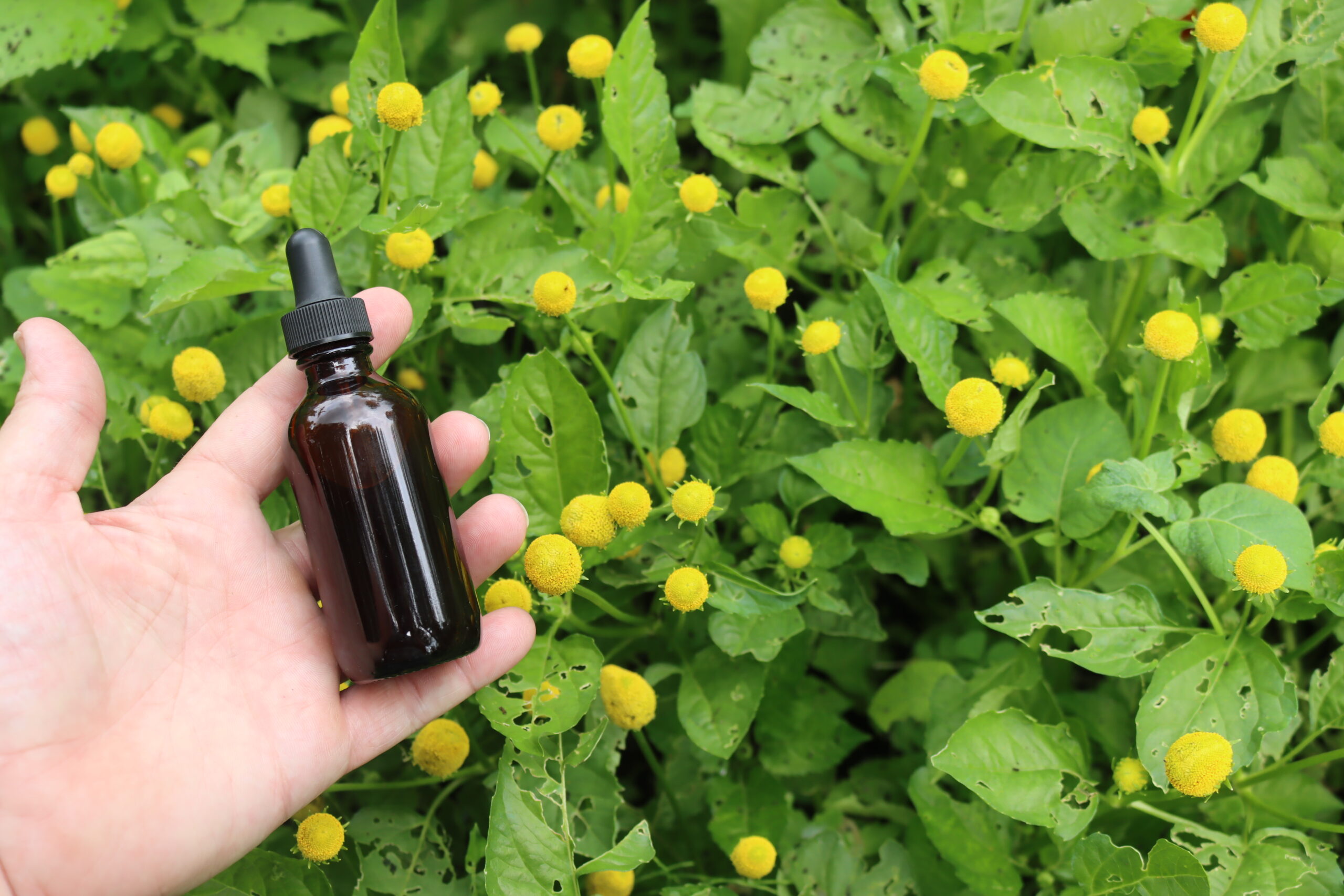
Parts Used for Tincture
When making our spilanthes tincture, we can use the whole aerial part of the plant, including the stems, leaves, and flowers. However, the highest concentration of medicinal compounds is in the flowerheads, so it’s important to have a good proportion of material be the flower heads if possible.
If you grow your own spilanthes, it will be easy to harvest your own and dictate how many flowerheads you collect. However, if that’s not available, you can also purchase dried spilanthes. Mountain Rose Herbs offers dried aerial portions, including the leaves and flowers.
Dried spilanthes generally comes pre-processed, but if you’re working with fresh spilanthes, it’s best to chop up the plant with a knife or scissors. Chopping up the plant material increases the surface area, allowing the alcohol to be more quickly absorbed and ensuring you get a strong tincture.
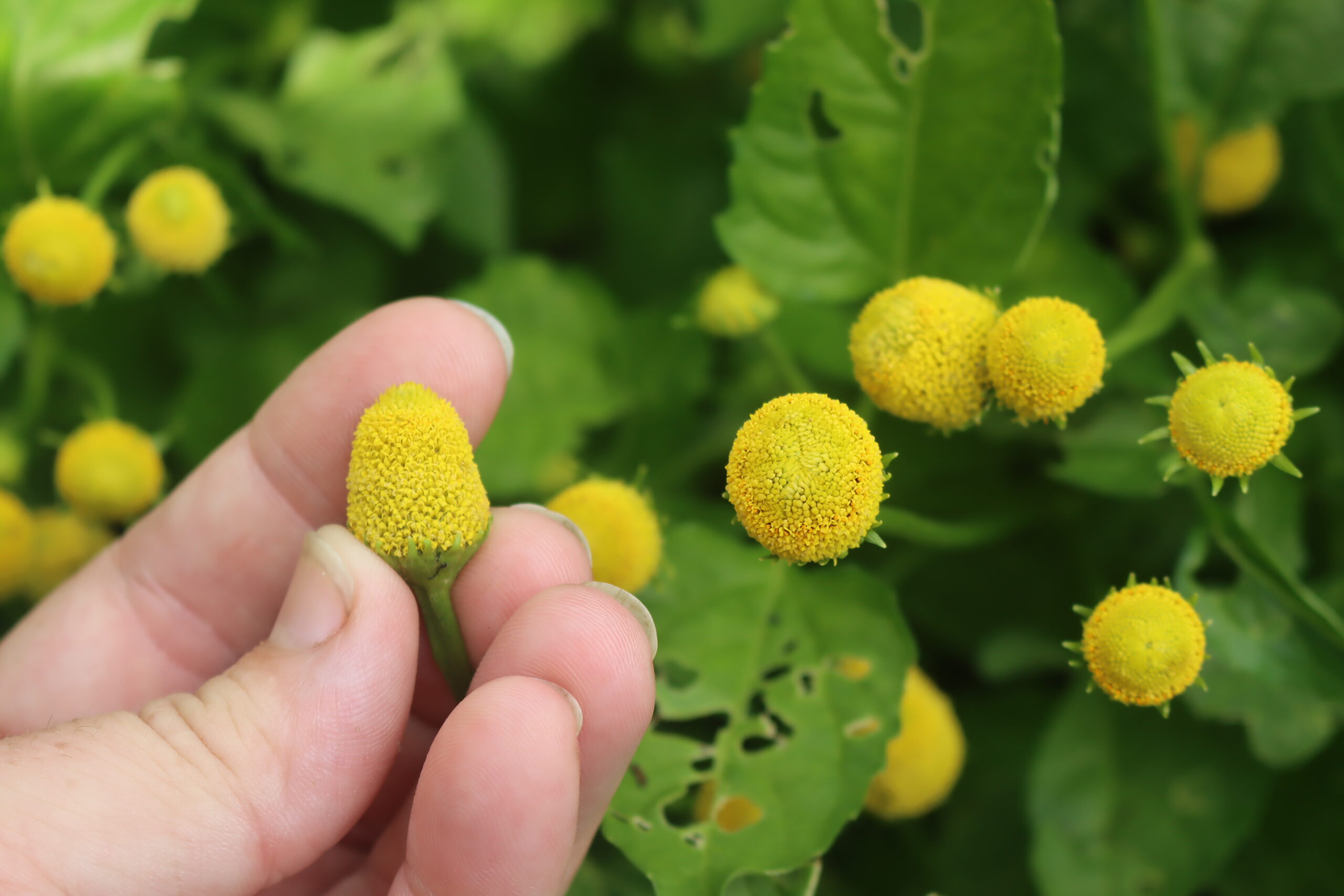
How to Make Spilanthes Tincture
To make a spilanthes tincture, you’ll need the following ingredients and equipment:
- Fresh or dried spilanthes
- Vodka* (or any other palatable alcohol that’s at least 80 proof/40 percent — feel free to substitute your favorite gin, rum, whiskey, etc.)**
- One-pint mason jar with lid (amber glass is ideal, but as long as you keep the tincture away from light at all times, it won’t make a difference)
- Funnel
- Cheesecloth
- Fine mesh sieve
- Amber glass tincture bottles (with dropper)
*The Herbal Academy’s tincture-making course specifically recommends using 40 to 60% alcohol for dried herbs and 70 to 95% alcohol for fresh herbs.
**Never use isopropyl/rubbing alcohol for tinctures (or any other remedy you plan on ingesting). Even in small amounts, this type of alcohol is toxic and meant for external applications only.
To begin, fill your mason jar ⅔ full with fresh herbs or ½ full with dried herbs. Then, cover the herbs with your chosen alcohol, ensuring that the herbs are entirely covered. It’s okay if some of the dried herbs float initially; we just want them to be in an adequate amount of alcohol.
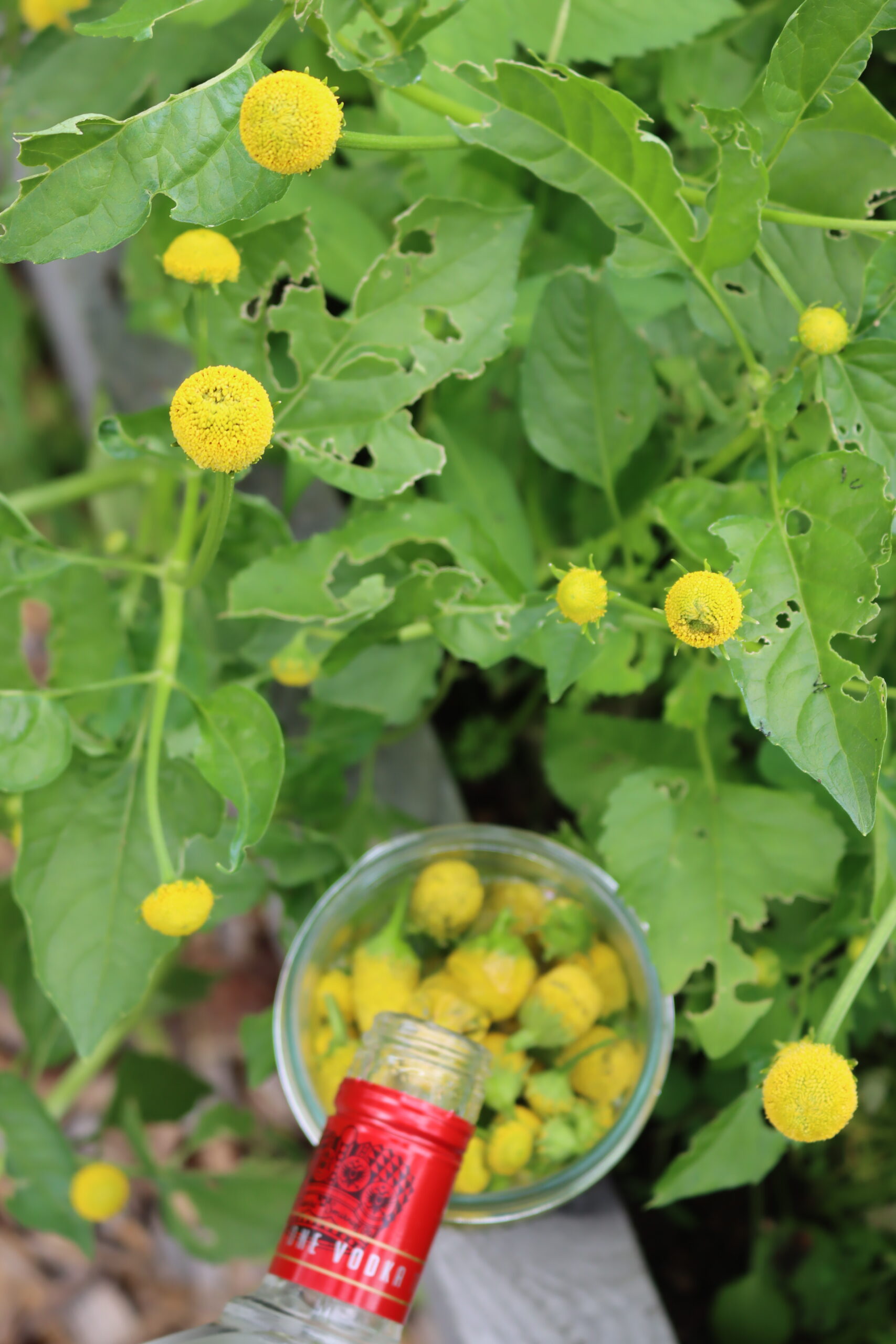
Close your jar with an airtight lid and place it in a cool, dark place. A space with a bottom kitchen cabinet or pantry will work. Just don’t forget about it. Your tincture will work best if you gently shake it once a day. Thankfully, if you miss a few days, tinctures are very forgiving.
After about 4 to 6 weeks, it’s time to decant the tincture.
To decant a tincture, you’ll need a fine mesh sieve or a funnel with a few layers of cheesecloth. Strain all the plant material out of your tincture, making sure to squeeze any liquid possible out of the plant material.
Pour your strained tincture into amber glass tincture bottles or small spray bottles if you want to use it for a throat spray or skin care.
Label all of your bottles with the tincture name, date made, and dosage. Plain masking tape and a marker work well for this because they’re easy to remove, so you can reuse the bottle. There’s no need to purchase fancy labels.
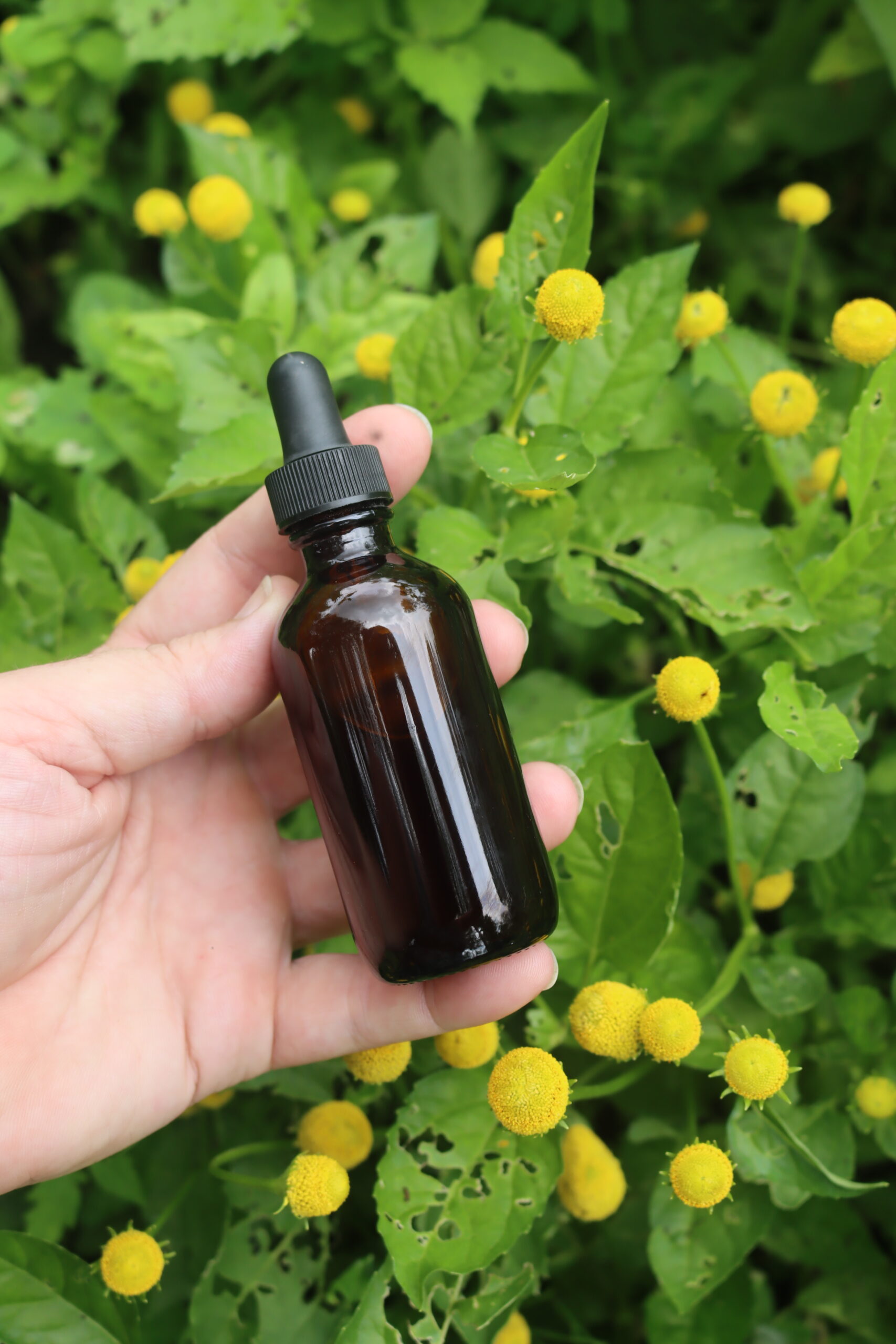
Spilanthes Tincture Dosage
It’s best to consult a clinical herbalist to get a specific dosage for your body and needs.
Generally, herbalists recommend adults take about ½ to 1 dropper of spilanthes tincture up to 2 times daily for three days as needed. Too much spilanthes can act as a diuretic, cause excessive salvation or tingling and numbness in the mouth, and kill off good gut bacteria.
Spilanthes is bitter and difficult to take plain. You can dilute your tincture in honey, tea, or water for internal use.
You can also use your tincture as a spray to help numb sore throats or mouth sores. The spray also works externally on inflammation and skin irritation, such as dermatitis.
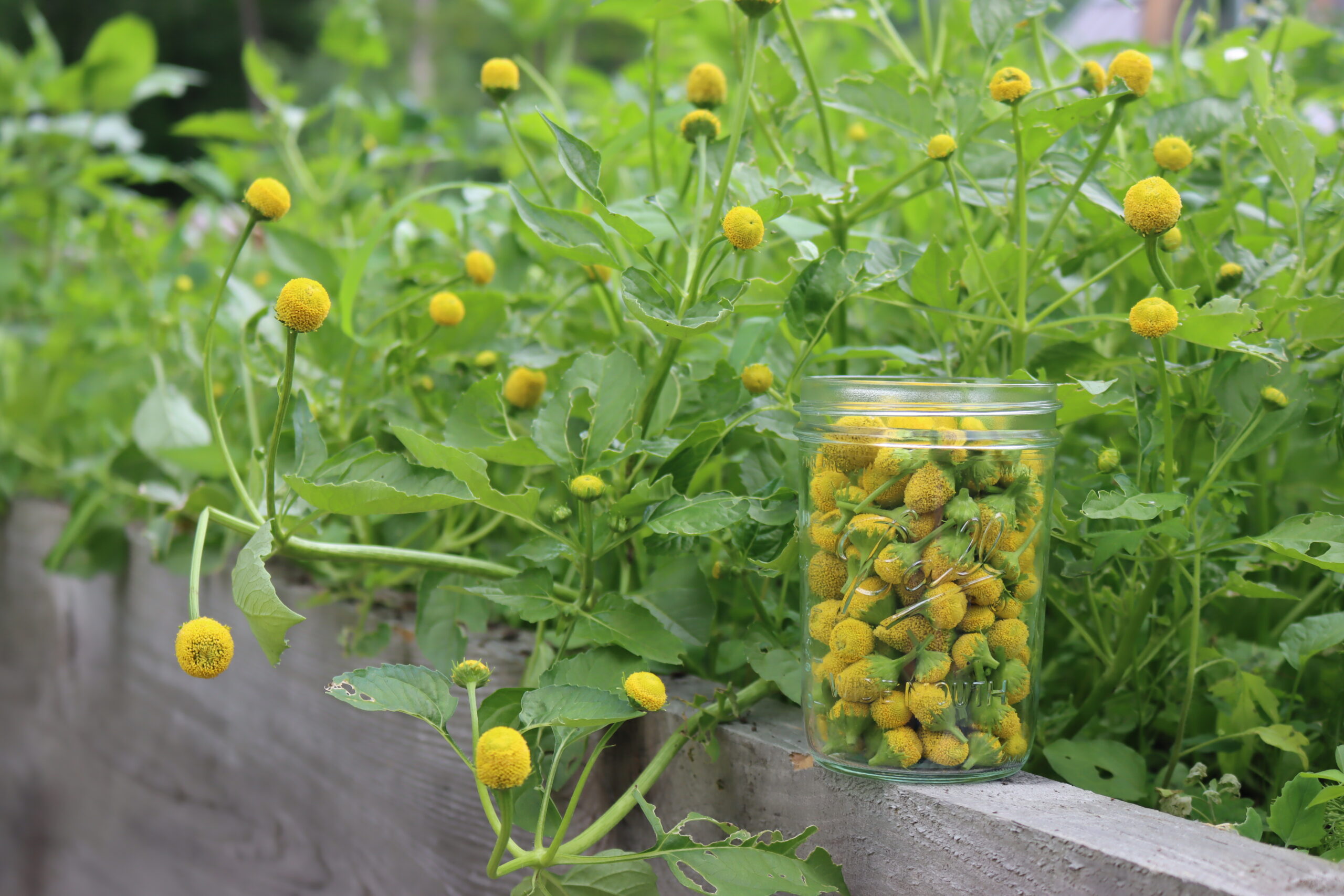
Spilanthes Formulations
Spilanthes tincture is often used at the site of pain and inflammation, like directly on a sore or toothache. You can also combine it with other herbs that work to treat pain internally, like St. John’s wort and valerian.
If you’re trying to fight off a cold, flu, or other infection, it’s best to pair spilanthes with other herbs for immune support. Try combining your spilanthes tincture with elderberry, echinacea, or self-heal.
You can also use other herbs to help make an effective throat spray for sore throats. Good options for this include usnea and sage.
If you’re interested in the science behind combining herbs to enhance their effectiveness, I’d recommend taking this online course in Mastering Herbal Formulations from the Herbal Academy. It covers the science of blending herbs into homemade formulations in detail.
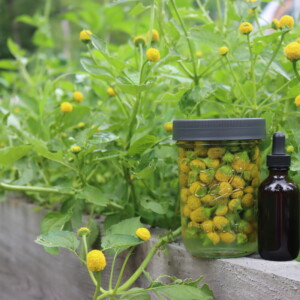
Spilanthes Tincture
Equipment
Ingredients
- Spilanthes dried or fresh
- Neutral Spirit such as vodka*
Instructions
- Begin by filling a clean mason jar about 3/4 full with fresh Spilanthes or 1/2 full with dried Spilanthes. If you're using dried plant material, it's often available at herbal supply stores.
- Pour your chosen alcohol (such as vodka, brandy, or whisky) over the Spilanthes, ensuring the plant material is fully submerged. The alcohol should cover the herbs by at least an inch. It’s important to use a high-proof alcohol (60 proof or higher) for proper extraction and preservation.
- Screw the lid on tightly, then shake the jar gently to mix the plant material with the alcohol. Store the jar in a cool, dark place, away from direct sunlight. Let it sit for 6 to 8 weeks to allow the Spilanthes to infuse.
- Every few days, give the jar a gentle shake to help the extraction process. Keep an eye on the alcohol level and top it off with more alcohol if necessary to ensure the plant material stays fully submerged.
- After the 6 to 8-week infusion period, it’s time to strain the tincture. Set up a funnel lined with cheesecloth over a clean, dark glass bottle. Carefully pour the liquid and plant material through the funnel, pressing down on the plant matter to extract as much of the liquid as possible.
- Once strained, label the tincture with the plant name, date of preparation, recommended dosage, and any suggested uses. Store it in a cool, dry place away from light. Tinctures made with alcohol have a long shelf life if stored properly.
Notes
Alcohol Choices
Vodka is the most commonly used alcohol for tinctures due to its neutral flavor, but other spirits like brandy or whisky work well too. Make sure the alcohol is at least 60 proof to ensure proper extraction and preservation. Do not use denatured alcohol or isopropyl alcohol for tinctures, as these are toxic and unsafe for consumption.Yield
The amount of tincture you yield will depend on whether you're using fresh or dried Spilanthes. Fresh herbs will typically yield slightly more tincture than the amount of alcohol you add. Dried herbs absorb some alcohol, leading to a slightly reduced yield. For a quart jar, use 2-3 cups of alcohol, and for a pint jar, about 1 to 1.5 cups. Always ensure the plant material remains fully submerged to prevent oxidation or spoilage.To make an alcohol-free glycerite tincture (glycerite)
If you prefer to avoid alcohol, you can make an alcohol-free glycerite tincture using vegetable glycerin. Simply cover the dried Spilanthes with a mixture of 3 parts glycerin to 1 part distilled water. For fresh Spilanthes, use only glycerin (no water). Glycerites need to be shaken daily as they infuse. Once ready, strain and bottle as you would with an alcohol tincture.Disclaimer on Homemade Herbal Remedies
I’ve been foraging wild medicines and treating my family with herbal remedies for the past 20 years, but I’m self-taught. Be aware that I am not a clinical herbalist, and this is based on my own research and personal experience using medicinal plants. I do not claim to have the experience that’d qualify me to advise you on your health, and I’m only providing this as a reference to encourage a broader interest in medicinal plants.
Please use this as a jumping-off point, but always do your own research and verify anything you read with multiple sources.
It’s always possible to have an adverse reaction to any medicinal herb, and plenty of people are allergic to even gentle herbs like chamomile. Always consult your doctor or a certified herbalist before trying any new medicinal plant. Often, they can have unintended reactions in combination with other herbs and supplements, and many herbs have side effects even when they are effective for their intended purpose.
If you are seriously interested in herbal medicine, I’d suggest investing in a course in herbal medicine, and I’d recommend any of the online courses put out by the Herbal Academy of New England. Specifically, the introduction to herbal medicine course and the family herbalist group of courses.
They also have a mushroom course, covering both medicinal and edible mushrooms, and a Botany and Wildcrafting Course. I’ve taken both and they’re informative, inspiring, and artfully presented.
Herbal Tinctures
Interested in making other homemade herbal tinctures?
- Yarrow Tincture
- Chickweed Tincture
- Elderberry Tincture
- Dandelion Tincture
- Burdock Tincture
- Echinacea Tincture
Herbal Medicine Making
Herbal medicines don’t stop at tinctures! Learn how to make more homemade medicine…
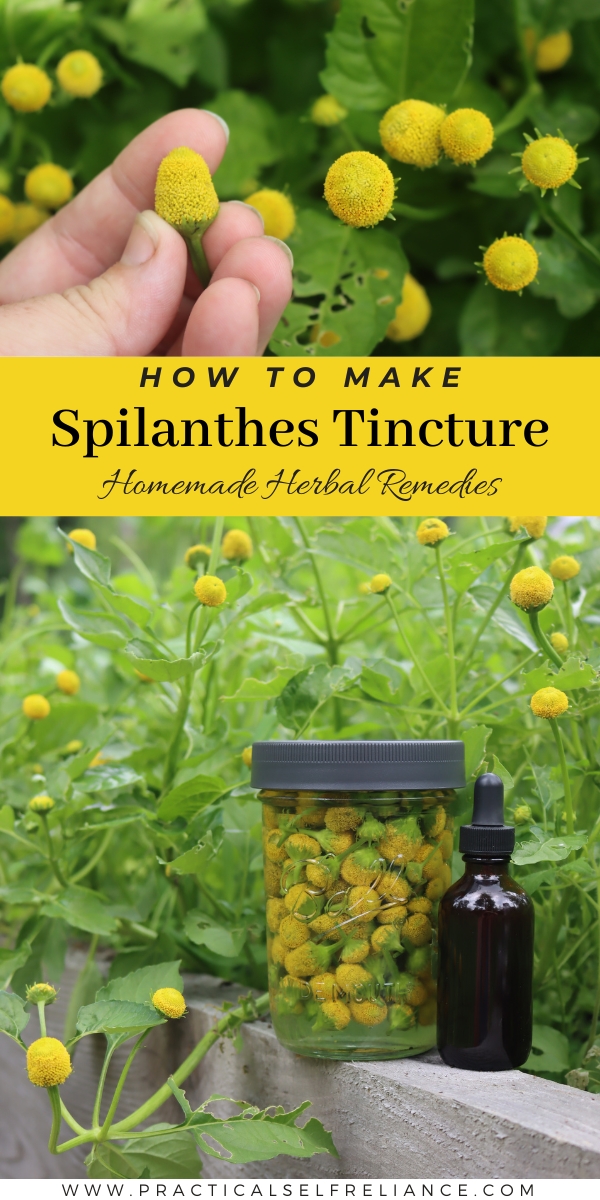
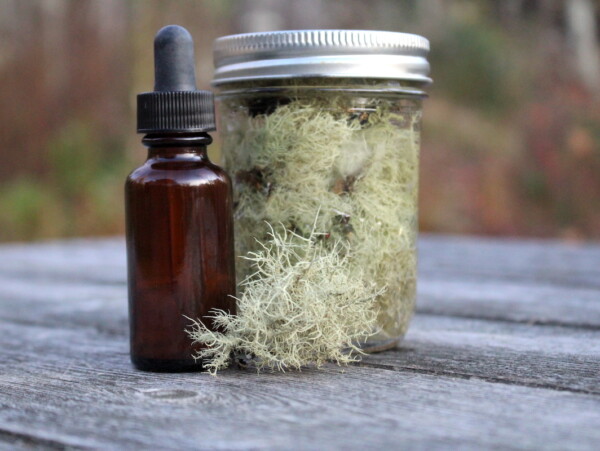
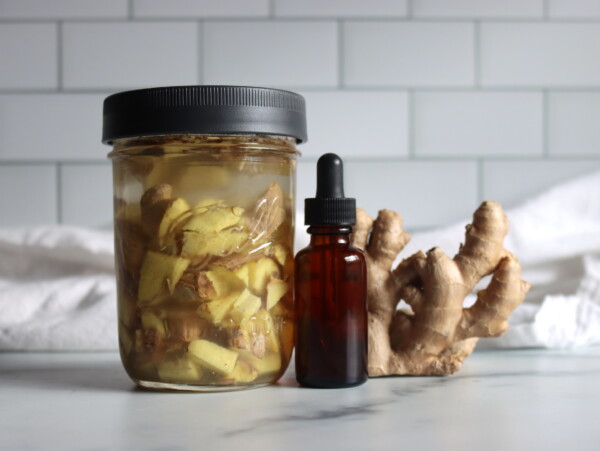
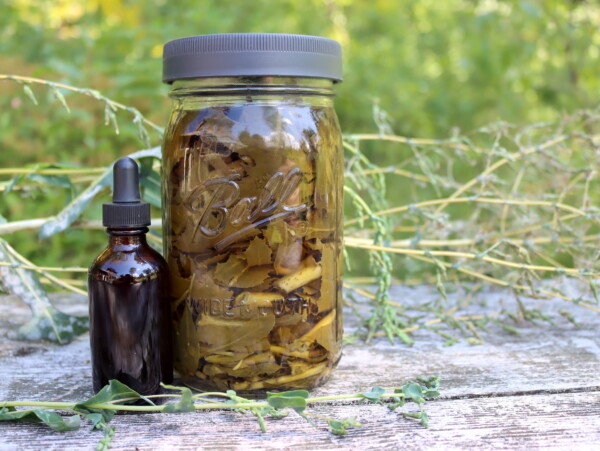
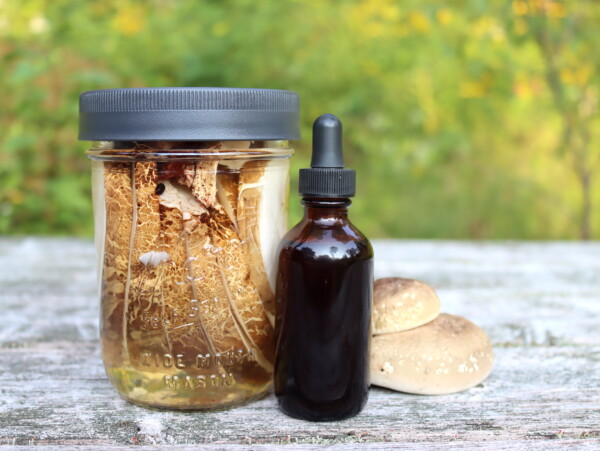
I’ve been drawn to spilanthes for years, and this year I finally have a decent harvest! Love all this detail, I can really work with this for my first rodeo🌞 Thanks so much!
Wonderful!